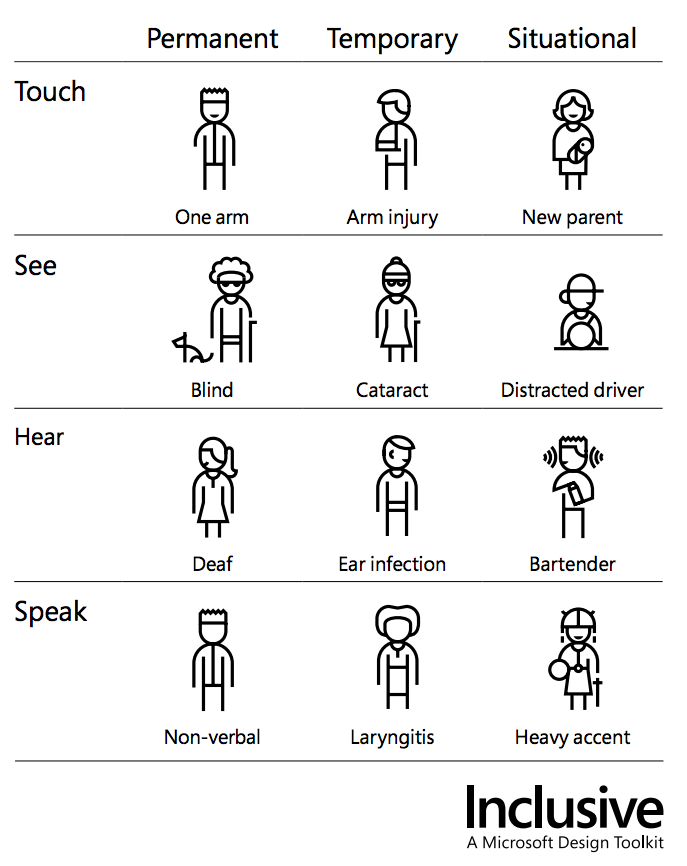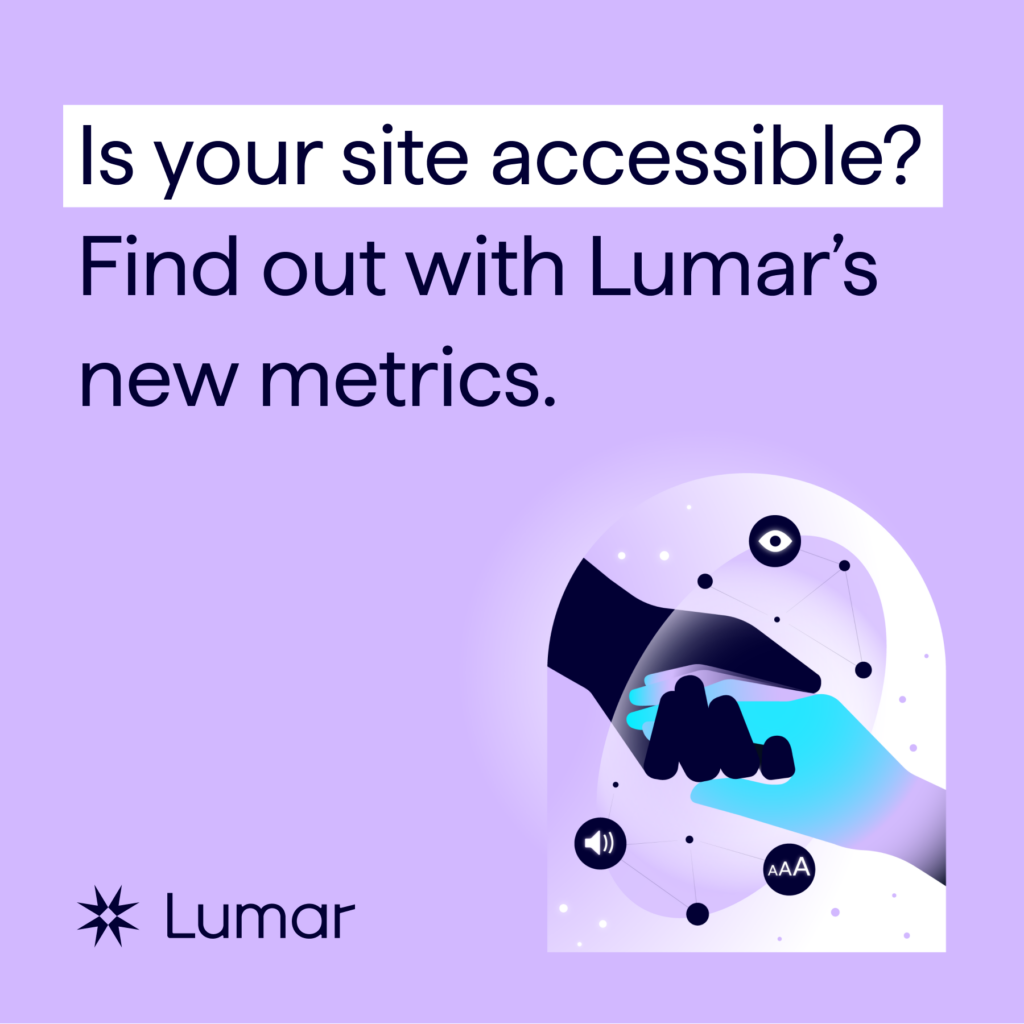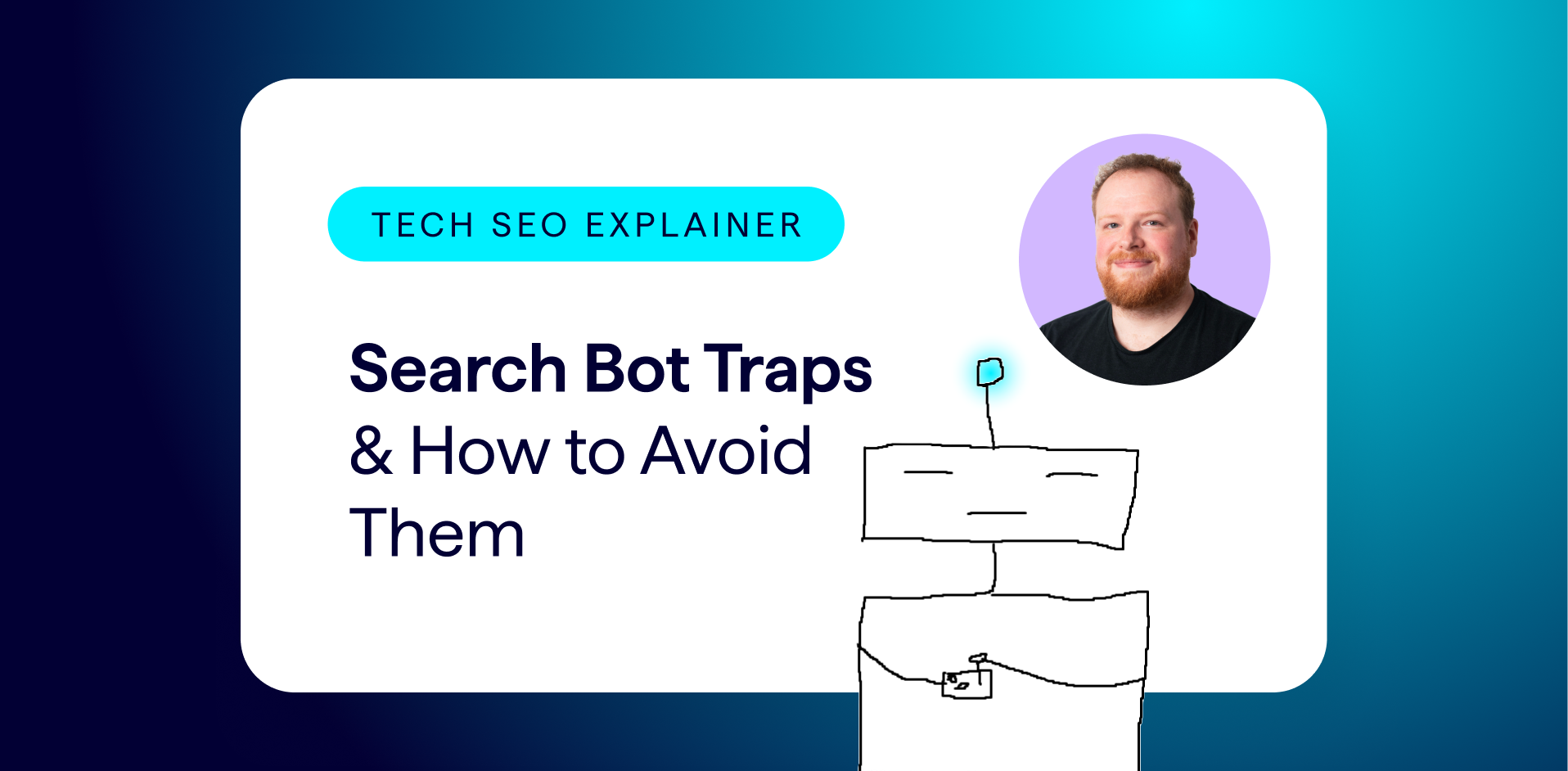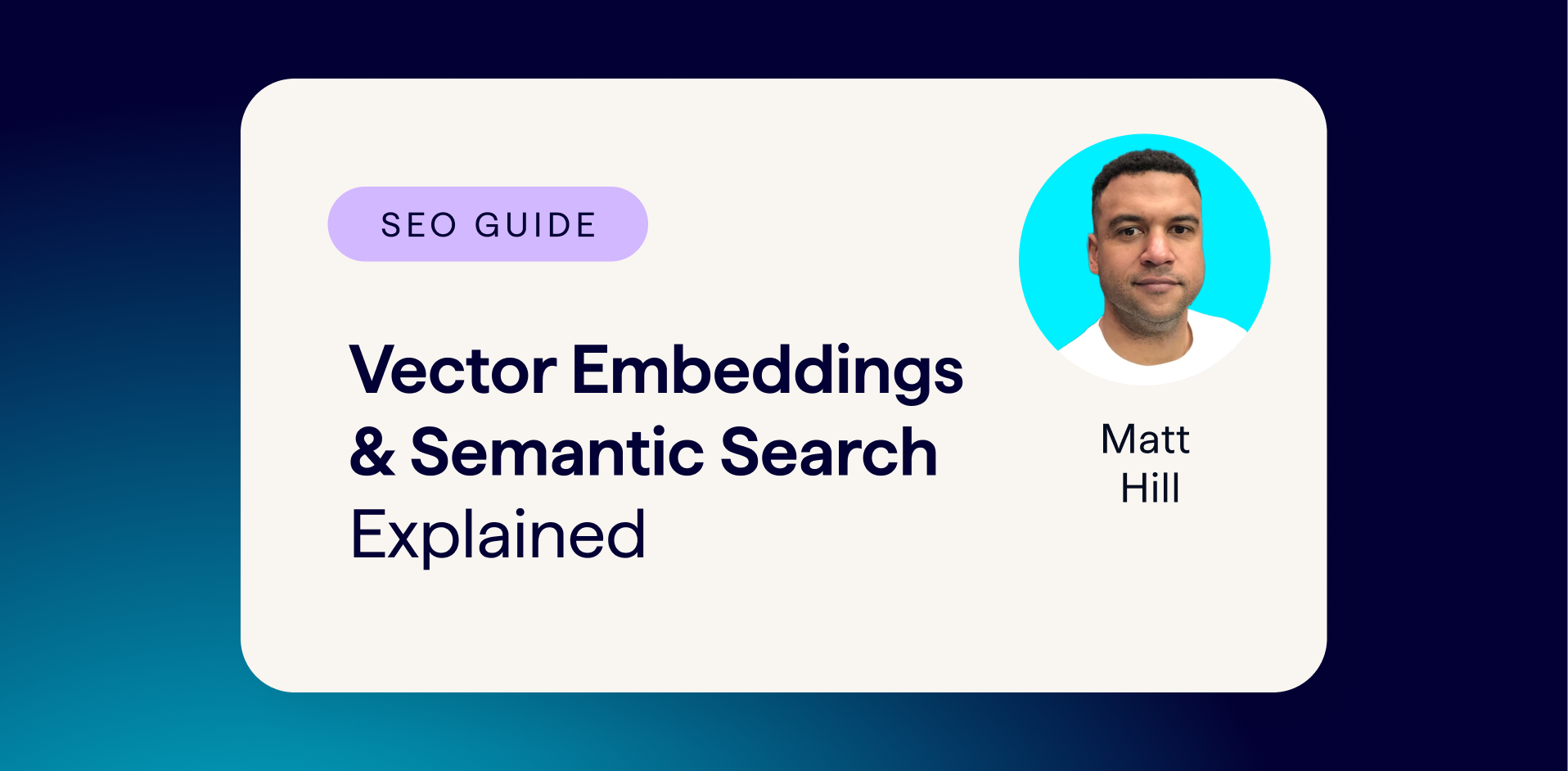Writing this article, I’m going to assume that you, the reader, care about accessibility to at least some extent. (You should!)
Accessibility isn’t just something to throw at your site to appease some nameless, faceless accessibility lobby: it is something that helps people, all people.
Now, I do want to be careful here: I think there’s a temptation, when talking about accessibility, to frame it entirely about how it benefits everyone, your business, etc. And those are all fair assessments! But I want to be explicit here: You should have an accessible website because it benefits disabled people. Disabled people deserve to have a web experience that is as robust and enjoyable as everyone else.

Getting your organization on board with digital accessibility
While you, the reader, understand that making a website accessible should be a priority, you may be in a situation where you need to get your broader team on board by making a business case for accessibility.
“I don’t know how to explain to you that you should care about other people.”
Author Lauren Morrill
When I was first getting into SEO, I was working in admin and ordering supplies for nurses. The site we ordered these supplies from was supposed to ship directly to the customer. These were explicitly supplies for disabled people, but the website was completely inaccessible. You could not use the website with a screen reader; you had to use a mouse, and you couldn’t even increase the font size. This meant their primary customers could not easily use their site.
Now, if you don’t care about accessibility yet, you can start reading here:
Accessibility is a fundamental aspect of web design that ensures that people with disabilities can access and use digital products and services on an equal basis with others. Despite the importance of accessibility, many websites and digital products are not fully accessible, making them difficult or impossible for people with disabilities to use. This not only causes frustration and inconvenience for people with disabilities, but it also represents a missed opportunity for businesses to tap into a significant and growing customer base.
Note: I will be using both “disabled people” and “people with disabilities” interchangeably throughout this article. Disabled is a describing word and should not be used to categorize a group of individuals. For example “disabled people” should be used rather than “the disabled”. Disability and disabled can be used interchangeably but it’s important to remember to use people-first language. However, some people with disabilities (particularly in the autistic community) push back on people-first language. Many disabled people, however, say the disability is not inside of them: they are not a “person with a disability.” Rather they are a “disabled person.” And, additionally, it’s ok to be a disabled person.
The purpose of this article is to make the business case for prioritizing accessibility. While accessibility is primarily a moral and ethical imperative, there are also compelling business reasons to prioritize it.
Why businesses should prioritize website accessibility
According to the World Health Organization, 1.3 billion people worldwide experience significant disabilities. This represents 16% of the world’s population or 1 in 6 of us. And this number doesn’t include people with temporary disabilities, people who are living with disabilities without a diagnosis, or people who are impacted by situational disabilities.
That’s a lot of frickin’ people!
Imagine going to a board meeting and saying “Don’t worry, I’m cutting costs by ensuring 1 out of 6 people will struggle to use our product.”
By prioritizing accessibility, businesses can create a more inclusive environment that welcomes all customers, regardless of their abilities.
Here are just some of the reasons your business should prioritize accessibility:
Ethical responsibility
First and foremost: prioritizing accessibility is not just a legal requirement, but a moral and ethical responsibility to ensure equal access to all customers. By making products and services accessible, businesses can create a more inclusive and equitable society. It also makes the lives of disabled people better: they no longer have to do workarounds or avoid Twitter while the latest inaccessible meme floats around. A deaf person should not be cut out from knowing what breaking news is happening because an organization doesn’t bother adding captions to their videos.
Positive brand image
Prioritizing accessibility sends a positive message to customers and stakeholders that the business values inclusivity and accessibility. This can enhance the brand image and reputation of the company, leading to increased customer loyalty and positive word-of-mouth marketing. Also, putting your money where your mouth is is important; it can be embarrassing if your company is celebrating Disability Awareness Day with an inaccessible site, or sharing an epilepsy awareness campaign image with flashing gifs.
Increased customer base
By prioritizing accessibility, businesses can tap into a significant (and growing) market of people with disabilities, representing a wider range of potential customers. People with disabilities have money, and often want to use that money to buy goods and services! The harder you make it for them, the less likely it is they will give you their money. An example in the tech space: one of the biggest consumer segments adopting voice-assisted technologies like Alexa and Google Assistant are disabled people; these devices make the world easier to navigate and help give disabled people more independence.
Improved usability & customer experience
Accessibility features can benefit all users, not just those with disabilities. By improving your website’s usability, businesses can enhance the overall customer experience. Again: if you make it easier for people to buy things, they will be more likely to buy those things. If you force a customer who has difficulty typing to pass a ‘da Vinci code’-style test to get to the checkout screen on your website, that customer will be less likely to buy from your business.
Competitive advantage
Accessibility can be a key differentiator in a crowded market: accessible sites will implicitly have access to more customers than inaccessible sites. (One-sixth of the world’s population, remember?) And making your content more accessible for people with dyslexia or ADHD, for example, can make it easier to read for people without those disabilities too.
Legal compliance
You don’t want your organization to get sued! Many countries have laws and regulations that require businesses to provide accessible products or websites. By ensuring accessibility, businesses can avoid legal penalties and potential lawsuits and ensure compliance with legal requirements.
Cost savings
Investing in accessibility early on can lead to cost savings for your business in the long run. By building accessibility into products and services from the start, businesses can avoid costly retrofitting later on. In addition, accessible design can reduce user support costs and improve product quality, resulting in cost savings over time. It is harder to make an inaccessible site than it is to make an accessible one. Fancy new sites with tons of JavaScript may look pretty, but they can introduce all sorts of issues for people who use screenreaders or who need other accessibility needs. A plaintext HTML site is accessible from the get-go: keep it that way!
Finally: a lot of people in the web space are painfully aware of how frail the human body can be. Many tech CEOs have some sort of immortality on their bucket lists, and in a more run-of-the-mill sense, you have the recent proliferation of wearables, supplements, health optimization apps, and so on. We are really, painfully aware of how frail the human body is. Part of the reason for this obsession is because, on some level, we are aware that the world is awful for disabled people to navigate, and awful to disabled people. But as we age, we will all become disabled at some point: not just temporarily, but permanently. If you don’t care about other people — if you won’t make the world more accessible for them — make it more accessible for yourself. Tomorrow you could be unable to use the product you make today. So make it accessible today.
The less common arguments for prioritizing accessibility from a business standpoint
Facebook has been around for 20 years. Google has been around for almost a quarter century. There are people who are using sites who started using them when they were in their forties and are now in their sixties. What does this mean? It means people who used to access these sites without any disabilities are now growing older and frankly are becoming disabled.
The web has been and can be a godsend for people with disabilities and older people: it can be a way to tap into spaces that were denied before. By designing products and services with accessibility in mind, businesses can create products that are more adaptable and resilient to future changes and advancements in technology.
In my opinion, accessibility can also improve search engine optimization (SEO). By making websites more accessible, you often make the website accessible to the bots that crawl content, making the site easier to render and index. Most accessibility changes are around aligning the technical parts of your website with the context of the content: this is also a major factor in SEO. The two go along together really well.
Prioritizing accessibility can also lead to innovation. By designing products and services with accessibility in mind, businesses can create new and innovative solutions that can benefit a wider range of users. Additionally, by involving people with disabilities in the design process, businesses can gain valuable insights and perspectives that can lead to more effective and user-friendly products.
A non-website digital accessibility example can be seen in video games: for The Last of Us II, the game’s production studio, Naughty Dog, worked with a variety of consultants to create a game that would be accessible to as many people as possible. Per the article:
“There are special audio cues they can toggle to create unique sounds depending on a variety of in-game factors. The first type is called Traversal Audio Cues. These will trigger when there is an obstacle a player can vault, or when there is ammunition, bricks or bottles to pick up. Then there are Combat Audio Cues that indicate when an enemy is within takedown range, when they’ve taken one out or when their reticle is pointed at an enemy.”
This doesn’t only allow people with visual disabilities to play the game, but creates new ways for people without disabilities to interact with that world, and makes it an all-around better game for having that conversation.
Dealing with pushback to accessibility initiatives
Some businesses may resist prioritizing accessibility due to concerns about cost, time, or complexity. While you may be tempted to let accessibility fall by the wayside, it is not a good idea. You should address these concerns by highlighting the long-term benefits of accessibility, such as increased customer loyalty and positive brand reputation, as well as potential cost savings from avoiding costly retrofits later on. Emphasize that accessibility is not just a legal requirement but also a moral and ethical responsibility to ensure equal access to all customers.
Here are some sample scripts you can use when coming up against this pushback:
Scenario 1:
Business owner: “We don’t have any disabled customers, so I don’t see the need to prioritize accessibility.”
Accessibility advocate: “While you may not have any disabled customers currently, there may be potential customers with disabilities who are unable to access or use your products and service. In addition, accessibility can improve the usability of your website for all users, not just those with disabilities. By making your website more accessible, you can create a better user experience for everyone.”
Scenario 2:
Business owner: “We don’t have the budget to hire an accessibility auditor. Can’t we just use a cheap plugin or overlay?”
Accessibility advocate: “While plugins and overlays can help improve accessibility, they are not a substitute for a comprehensive accessibility audit, and can sometimes introduce more issues than they solve. A professional accessibility audit can identify specific issues and provide actionable recommendations for improving accessibility. In addition, investing in accessibility can lead to long-term cost savings by avoiding costly retrofits later on.”
Scenario 3:
Business owner: “Our website is already accessible enough. We don’t need to do anything more.”
Accessibility advocate: “While your website may meet some accessibility standards, there may be areas where it can be improved. Accessibility is not just a legal requirement, but also a moral and ethical responsibility. By prioritizing accessibility, you can create a more inclusive and equitable society, and enhance your brand reputation and customer loyalty. In addition, by improving accessibility, you can improve SEO, which can lead to increased web traffic and visibility.”
Scenario 4:
Business owner: “I don’t think accessibility is relevant to our business. Our products aren’t targeted at people with disabilities.”
Accessibility advocate: “While your products and services may not be specifically targeted at people with disabilities, it’s important to consider the needs of all customers. By prioritizing accessibility, you can create a more inclusive and welcoming environment for all customers, which can enhance your brand reputation and customer loyalty. And, while you may not think your products aren’t targeted at people with disabilities, you’re ignoring that people may shop for gifts for friends and family, have a temporary disability, or even have needs for the product you don’t know.”
Final thoughts — advocating for digital accessibility
Accessibility is not just a moral and ethical imperative, but also a smart business decision. Prioritizing accessibility can increase customer loyalty, enhance brand reputation, tap into a growing customer base, improve usability, and provide cost savings in the long run. It is important to keep in mind that accessibility benefits everyone, not just people with disabilities. By designing products and services with accessibility in mind, businesses can create new and innovative solutions that can benefit a wider range of users.
As an SEO, developer, or consultant, it may seem like it’s not your lane to advocate for accessibility: but it is all our responsibility to make sure accessibility is a priority.
As technology evolves and new challenges arise, businesses must continue to prioritize accessibility and adapt their products and services to meet the needs of all customers.
One way to ensure ongoing accessibility is to involve people with disabilities in the design process. By soliciting feedback and incorporating their perspectives, businesses can create more effective and user-friendly products. This can also lead to new and innovative solutions that benefit a wider range of users.
Another way to ensure ongoing accessibility is to stay up-to-date with accessibility standards and guidelines, such as the Web Content Accessibility Guidelines (WCAG). These guidelines provide a framework for creating accessible digital products and services, and staying compliant with them can help ensure that businesses are meeting legal requirements and creating a more inclusive environment for all customers.
As SEOs, developers, and consultants, it is our responsibility to advocate for accessibility and ensure that it is a priority in all aspects of digital design and development.
More website accessibility resources
Want to learn more about website accessibility best practices? We’ve got you covered! These webinars, articles, and guides will help you develop an effective approach to building a more inclusive, WCAG-compliant website.
- Why SEOs Need to Understand Website Accessibility: Lumar solutions engineer Matt Hill explores the intersection of digital accessibility and SEO best practices.

- Webinar On-Demand – Getting Started With Digital Accessibility: Learn how to get started with web accessibility and build a more inclusive (and compliant!) website in this on-demand Lumar webinar. Featuring experts from Skyscanner and Quality Logic.
- The Future of Website Accessibility – Emerging Trends and Technologies: Where is digital accessibility headed? From legal shifts to AI tools, learn about the trends and technologies guiding the future of web accessibility in this deep dive from Clyde Valentine, Head of Growth at digital accessibility consulting firm QualityLogic.
- An Introduction to ADA Website Accessibility Compliance: Many US businesses, organizations, and government agencies are required to comply with ADA (Americans With Disabilities Act) website accessibility rules. Not sure where to start? This primer will get your team up to speed with current web accessibility requirements.
- Webinar On-Demand – Fix & Prevent Common Website Accessibility Issues: Feeling overwhelmed by website accessibility (a11y) issues? Not sure how to create the right processes and workflows to make your site more inclusive? Struggling to meet WCAG guidelines? This is the webinar for you.








